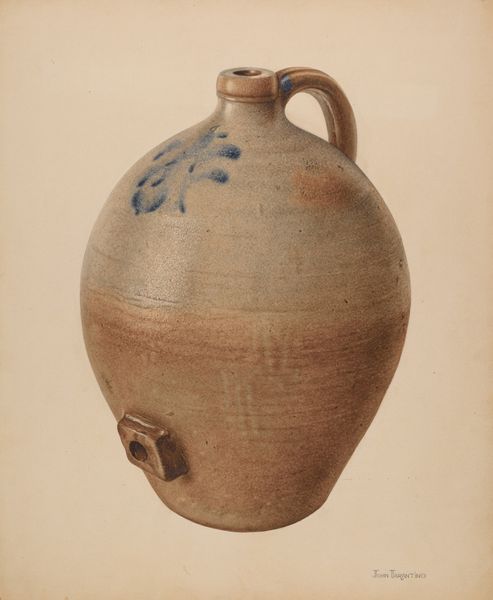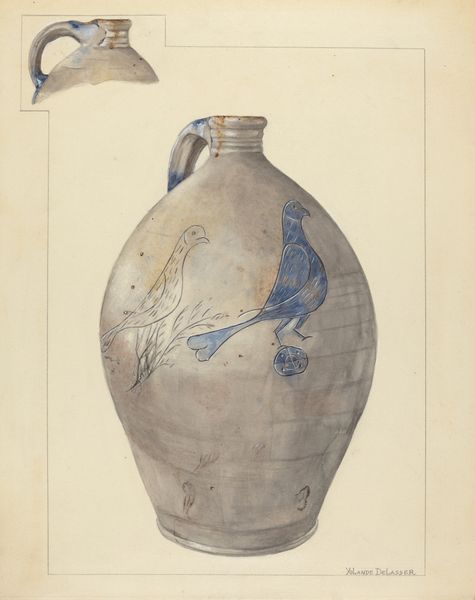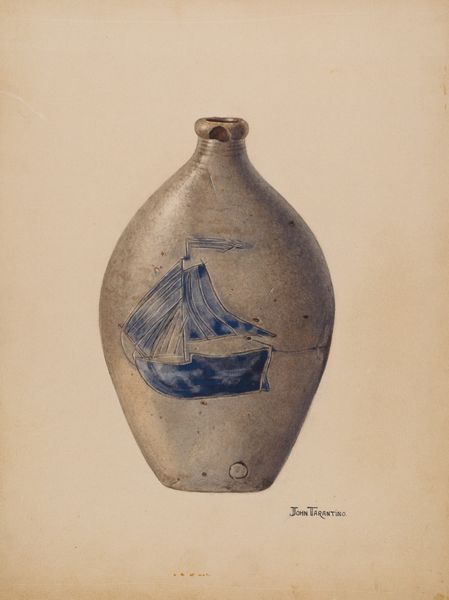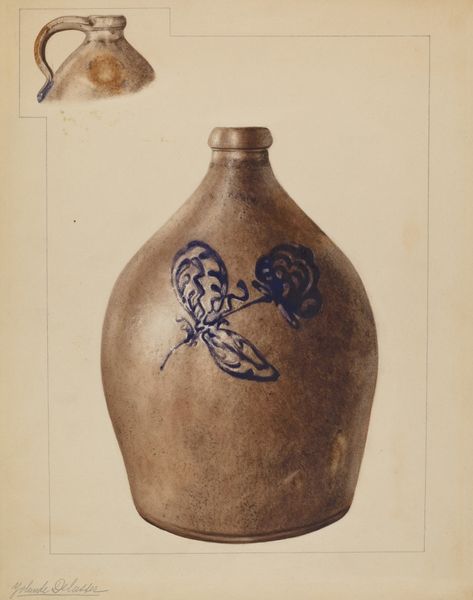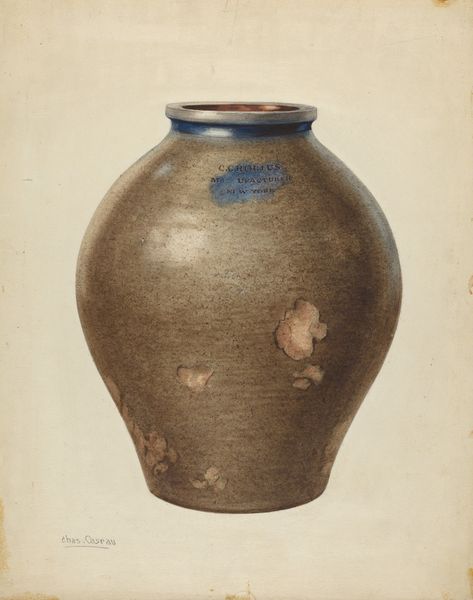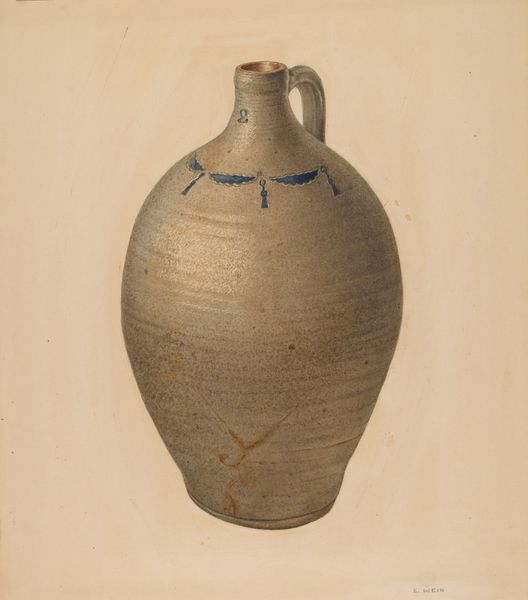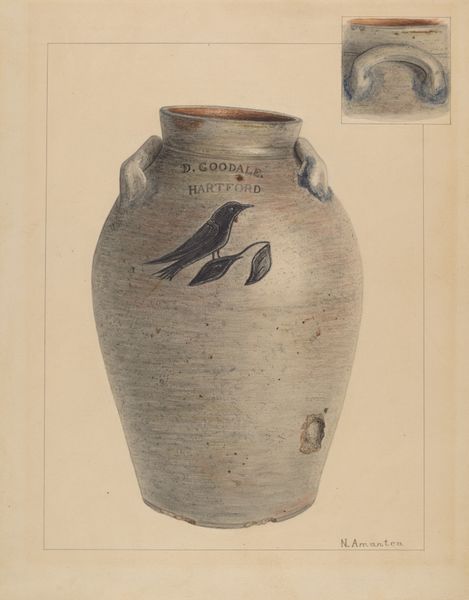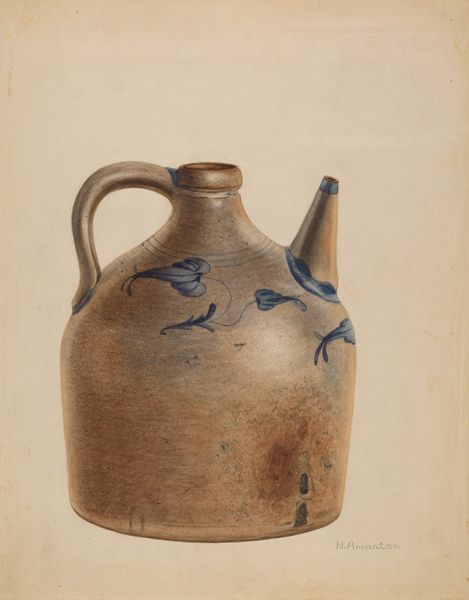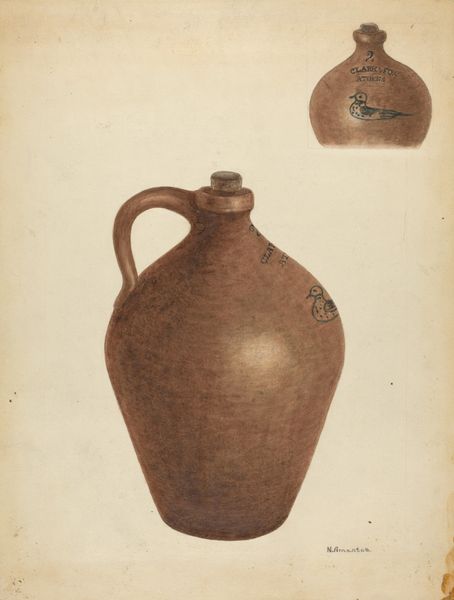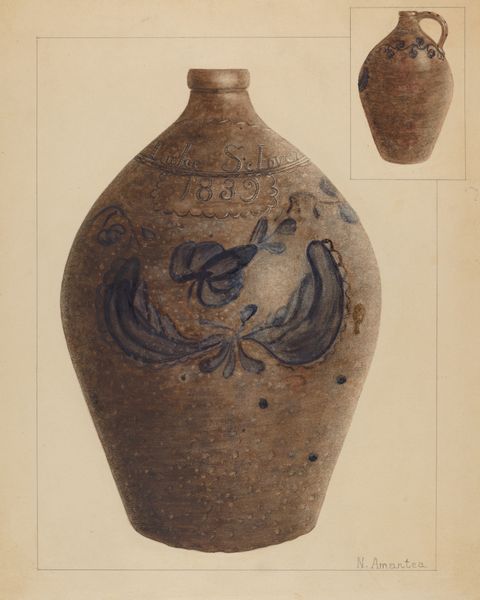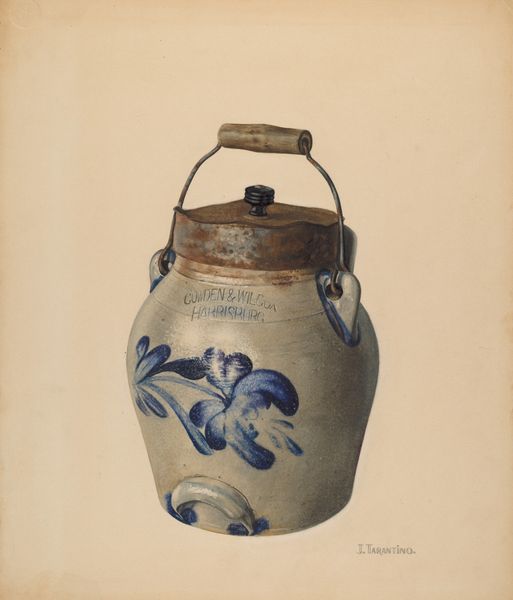
drawing, watercolor
#
drawing
#
water colours
#
charcoal drawing
#
watercolor
#
watercolor
#
realism
Dimensions: overall: 51.1 x 38.4 cm (20 1/8 x 15 1/8 in.) Original IAD Object: 13" High 10 1/2" Dia(waist) 4 3/8" Dia(base)
Copyright: National Gallery of Art: CC0 1.0
Editor: So, this is Giacinto Capelli’s "Jug," created in 1941 using watercolor and charcoal. It has such a sturdy, almost primal feeling. I’m struck by how something so everyday is given this weight. What do you see in this piece? Curator: The jug, often a symbol of sustenance and community, is rendered here with a compelling simplicity. Its muted tones evoke a sense of antiquity. Note how the artist captures light and shadow, creating a tangible presence, almost like a memory taking form. Does the object’s function influence your perception of its artistic value? Editor: I guess I hadn’t really thought about its function, I was more focused on how realistic it looked, especially given the materials. Curator: Consider then how the artist elevates an ordinary object. The careful details in the foliage suggest a connection to nature, a sense of organic life infused into something utilitarian. This interplay between the domestic and natural worlds, common in art history, speaks to our deep-seated need to find beauty and meaning in the everyday. Does the inclusion of these leaves transform the meaning of the jug for you? Editor: Definitely. It’s no longer *just* a jug; it’s part of a bigger picture. It hints at what it holds, where it's placed, how it is handled. Almost telling a silent story! Curator: Exactly! Symbols resonate because they are containers of collective experience. Reflect on this when viewing art. Visual imagery forms cultural memory. Editor: That’s something I’ll take with me. I appreciate your perspective – it has really changed how I view the artwork! Curator: And I've enjoyed exploring how simple subjects offer an almost universal invitation into the human experience.
Comments
No comments
Be the first to comment and join the conversation on the ultimate creative platform.

